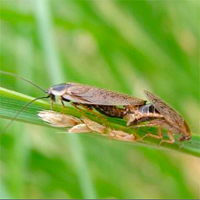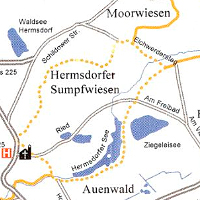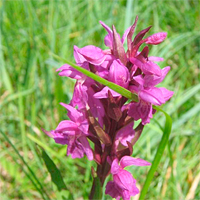























Traditionally, knowledge of local flora and fauna is acquired on excursions, or field trips. Whereas in the 1960s these would have been carried out regularly, today the situation is much more humble. However, students are still highly interested in learning in the field. And in future, it is increasingly expected that students – primarily those in organismic-oriented courses – will acquire relevant knowledge of local plant and animal life independently. Our ‘virtual excursion’ aims to support students in their efforts.
The aim of the planned project is to develop an interactive website on the bio-diversity of a selected field site (the Tegeler Fliess nature conservation area, near Berlin). In pursuing this aim, we shall be making use of HyperImage. The website is to be structured in much the same way as a virtual city guide: instead of tourist attractions, the range of links available in HyperImage allow us to provide image-based references to selected habitats (e.g. flowing waters, dry grasslands, marshlands) and the organisms domiciled there (higher plants, animals – mammals, birds, amphibians, reptiles, snakes, insects, spiders, soil organisms). Information that can be assigned to the images (descriptions, differential diagnoses, geographical distribution, systematics, etc.) will be provided in text layers. Finally, a feedback module in the form of a quiz is to be developed that allows the user a degree of self-assessment in evaluating the quality of learning during the field trip.
The ‘virtual excursion’ outlined here is not intended to replace the experience that can only be gained from an extended stay in the field. Much more, it is intended to stimulate students to carry out their own field trips and to be an aid in preparatory and follow-up work (what animals/plants can I observe at different times of the year in the area? What that bird of prey a buzzard or a kite? How can I distinguish an amber snail from a ramshorn snail?).
The Tegeler Fliess nature conservation area was chosen for the project for three reasons: 1) it is close to a major city and has a good network of footpaths from which many plants and animals can be observed; 2) it has a high level of bio-diversity, and 3) the flora and fauna of the area are well known and have been well documented.
A student-based evaluation is envisaged in the second part of the project which will serve as an integrated component of the development of the bio-diversity learning project. Should the project prove to be a success among students, we will approach other cooperation partners, even those outside the narrow academic world (e.g. pressure groups, local government), and (commercial) operators of navigation systems to make the ‘virtual excursion’ available on mobile phones directly in the field. In our opinion, the promising potential in researching bio-diversity can best be exploited by developing a feedback system between users and the database. Images transmitted by mobile phone from the user to the database could be evaluated by appropriate biometric software (much the same as the software currently used for face recognition). The user is then informed of the name of the genus or species if the taxon is known in the area. On the other hand, the image generated by the user could be added to the database (complying with data protection guidelines). Geo-tagging (the linking of images with GPS details using Google Earth) would give a precise connection between the organism and the time and place it was found. The corpus of images generated in this way could represent a valuable foundation for research in bio-diversity and management (nature conservation).
Project Director: Prof. Dr. Hannelore Hoch
Museum für Naturkunde,
Humboldt University, Berlin, Institute for Systematic Zoology
Invalidenstraße 43, D - 10115 Berlin
Phone +49 (0)30 2093 8519 | Fax +49 (0)30 2093 8528
hannelore.hoch@museum.hu-berlin.de
Collaboration: Martin Pingel